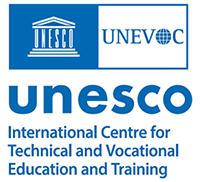
The UNESCO-UNEVOC International Centre: Who We Are | What We Do | Working With Us | Get in Touch
The UNEVOC Network: Learn About the Network | UNEVOC Network Directory
For Members: UNEVOC Centre Dashboard
Thematic Areas: Inclusion and Youth | Digital Transformation | Private Sector Engagement | SDGs and Greening TVET
Our Key Programmes & Projects: BILT: Bridging Innovation and Learning in TVET | Building TVET resilience | TVET Leadership Programme | WYSD: World Youth Skills Day
Past Activities: COVID-19 response | i-hubs project | TVET Global Forums | Virtual Conferences | YEM Knowledge Portal
Our Services & Resources: Publications | TVET Forum | TVET Country Profiles | TVETipedia Glossary | Innovative and Promising Practices | Toolkits for TVET Providers | Entrepreneurial Learning Guide
Events: Major TVET Events | UNEVOC Network News
(Complementary Modes, Formative & Summative)
Generally an effective TVET System should have relevant measurable outputs which are used for evaluation and assessment. The evaluation will serve two complementary functions, one with a prospective aim, formative – to gain feed back and the second is summative – to assess concrete achievement and to gain evidence. Ideally, the two modes are complementary. Evaluation will not exclude the need for self-evaluation by Enterprises and TVET Providers. 1
1. Content developed by Moustafa Wahba, Thread: RE: M&E tools (Nov. 19, 2007)
Links